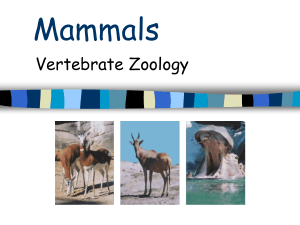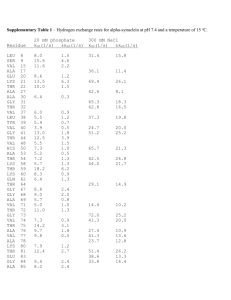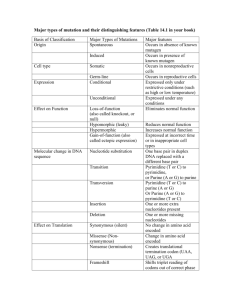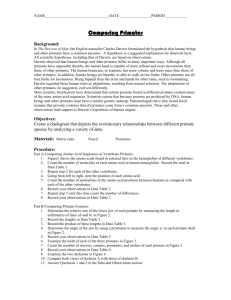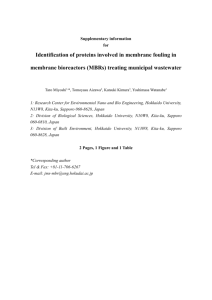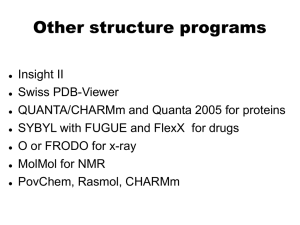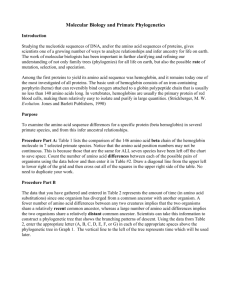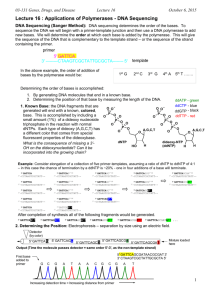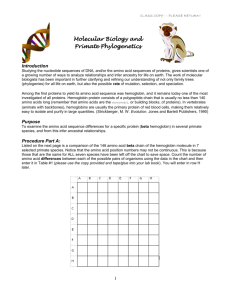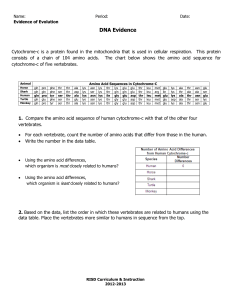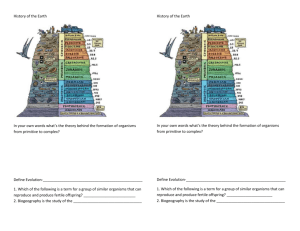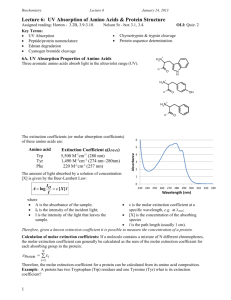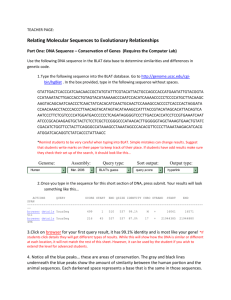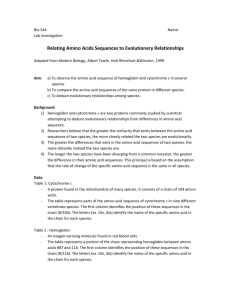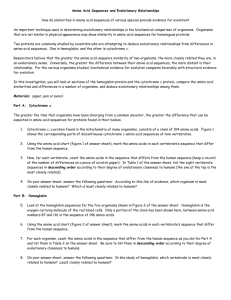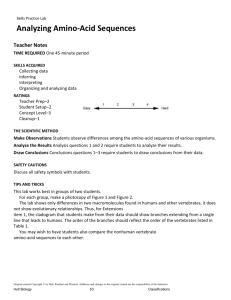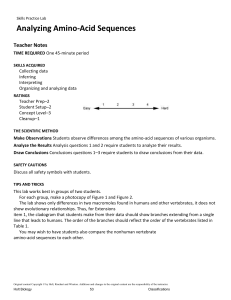Evidence of Evolution Stations
advertisement
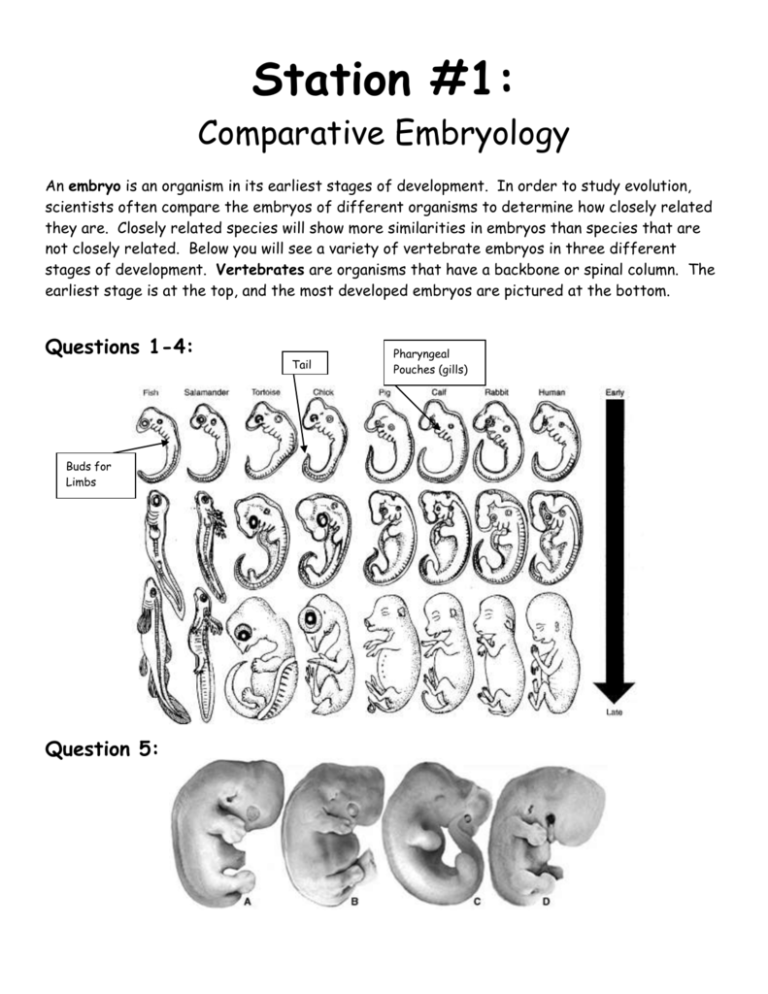
Station #1: Comparative Embryology An embryo is an organism in its earliest stages of development. In order to study evolution, scientists often compare the embryos of different organisms to determine how closely related they are. Closely related species will show more similarities in embryos than species that are not closely related. Below you will see a variety of vertebrate embryos in three different stages of development. Vertebrates are organisms that have a backbone or spinal column. The earliest stage is at the top, and the most developed embryos are pictured at the bottom. Questions 1-4: Buds for Limbs Question 5: Tail Pharyngeal Pouches (gills) Station #2: Comparative Anatomy – Homologous Structures Scientists use homologous structures in different organisms as evidence of evolution. Homologous structures are found in organisms that are related and they have a similar structure but different functions for each organism. Homologous structures are evidence of divergent evolution. Divergent evolution is when species that are closely related look different because they have adapted to different environments. Pictured below are the forelimbs of six organisms. These are homologous structures. Questions 6-11: Humerus Radius and Ulna Carpels, Metacarpels, and Phalanges Station #3: Comparative Anatomy – Analogous Structures Scientists use analogous structures in organisms as evidence of evolution. Analogous structures are found in organisms that are not related; they have a different structure but similar functions for each organism. Analogous structures are evidence of convergent evolution. Convergent evolution is when unrelated animals begin to resemble each other because they are adapting to a similar environment and have similar needs. Pictured below are the wings of three organisms. These are analogous structures. Questions 12-18: Bat Bird Insect Station #4: Comparative Anatomy – Vestigial Structures Vestigial structures are structures that once had a function within an organism but are no longer needed for that function. Because of this, many vestigial structures have reduced in size over time because they no longer serve a purpose for the organism. Scientists use vestigial structures as evidence of evolution because they show how the organism has changed over a long period of time. Shown below are pictures of the skeletons if three birds. Two of these birds, the kiwi bird and the ostrich, have vestigial wings that no longer have a function. These birds don’t fly! The last bird, a bald eagle, has functional wings because it must fly to find and hunt prey. Questions 19-25: Vestigial Wings Kiwi Bird: Ostrich: Eagle: Functional Wings Station #5: Comparative Biochemistry Scientists look at the similarities in DNA, RNA and protein sequences to determine if organisms are closely related and if they have evolved from a common ancestor. DNA is the code for making proteins. The closer the DNA, the closer the amino acids are. If two species have very similar amino acid sequences, they are closely related and have evolved from a common ancestor. The more differences in the amino acid sequences of two species, the less related they are. Below is a table showing the amino acid sequences for a human and four other primates. At the bottom of the page, there is an evolutionary tree showing how closely related these primates are. The closer they are on the evolutionary tree, the more related two species are. Questions 26-29: Amino Acid Sequences Baboon ASN THR THR GLY ASP GLU VAL ASP ASP SER PRO GLY GLY ASN ASN Chimp SER THR ALA GLY ASP GLU VAL GLU ASP THR PRO GLY GLY ALA ASN Lemur ALA THR SER GLY GLU LYS VAL GLU ASP SER PRO GLY SER HIS ASN Gorilla SER THR ALA GLY ASP GLU VAL GLU ASP THR PRO GLY GLY ALA ASN Human SER THR ALA GLY ASP GLU VAL GLU ASP THR PRO GLY GLY ALA ASN Prosimians Lemurs Chimpanzee Humans Gorillas Orangutans Gibbons Baboons Station #6: Fossil Evidence The fossil record is the most clear and direct evidence for evolution. Fossils show a record of species that live long ago. These ancient species can be compared to species that live today to show how change has occurred over time. Modern species have evolved from ancient species and they have many derived traits. Derived traits are newly evolved features, such as feathers, that do not appear in ancient fossils. Ancient species do not have these derived traits but they do share ancestral traits with the modern species. Ancestral traits are more primitive features, such as teeth and tails, which do appear in ancient species. Below are pictures of ancient organisms and their modern counter-parts. These modern organisms evolved from the ancient forms. Ancient Glyptodont: Modern Armadillo: Mass = 2000 kg Mass = 4 kg Ancient Eohippus: Modern Horse:
